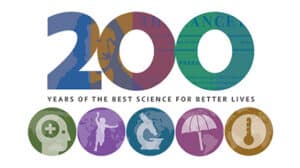The newly included treatments are expected to have a substantial positive impact on global public health without imposing excessive financial burdens on the health budgets of low- and middle-income countries
New medicines for multiple sclerosis, cancer, infectious diseases, and cardiovascular ailments are included in the updated Model Lists of Essential Medicines (EML) and Essential Medicines for Children (EMLc) published by the World Health Organization (WHO) on Wednesday.
These newly included treatments are expected to have a substantial positive impact on global public health without imposing excessive financial burdens on the health budgets.of low- and middle-income countries.
Essential medicines are selected based on their ability to address the priority healthcare needs of a population. The selection process considers factors such as disease prevalence, public health relevance, evidence of efficacy and safety, and cost-effectiveness when compared to alternatives.
The WHO Model Lists are updated every two years and serve as a reference for countries and regional authorities to adapt according to their specific needs and treatment guidelines for creating or updating their national essential medicines lists.
The primary aim of the updated Model Lists is to improve access to innovative medicines that demonstrate clear clinical benefits. This improvement in access is intended to be equitable across different regions and income levels.
“For over 40 years, countries all over the world have relied on the WHO Essential Medicines List as a definitive, evidence-based guide to the most important medicines for delivering the biggest health impact,” Dr. Tedros Adhanom Ghebreyesus, WHO Director-General, addressing a press conference, said. “Rising prices and supply chain disruptions mean that all countries now face increasing problems in ensuring consistent and equitable access to many quality-assured essential medicines. WHO is committed to supporting all countries to overcome these obstacles to increase access with equity.”
In low- and middle-income countries, an estimated 350 thousand children are diagnosed with cancer every year and many of them are unable to access the necessary treatment.
According to WHO Director-General, only 25 percent of low-income countries include childhood cancer medicines in their health benefit packages.
This lack of coverage subjects children and families to significant suffering and financial hardship or exposes them to the risk of receiving substandard and falsified medicines. Consequently, the survival rate of children in these countries is less than 30 percent, in stark contrast to the more than 90 percent survival rate for children in high-income countries.
In September 2018, WHO launched the Global Initiative for Childhood Cancer, which has been made possible through a generous contribution of $15 million from St. Jude Children’s Research Hospital in the United States. This initiative aims to achieve survival rates of at least 60 percent in low- and middle-income countries by 2030. The focus is on six cancers that are highly curable and represent over half of all childhood cancers.
Since its inception, over 20 countries have developed cancer strategies prioritizing children, and some have implemented new legislation to include childhood cancer treatment in their essential health benefit packages.
In December 2021, WHO and St. Jude announced the Global Platform for Access to Childhood Cancer Medicines, with the ambitious goal of providing universal, sustained access to quality-assured, essential cancer medicine for all children in low- and middle-income countries, free of charge. To support this initiative, St. Jude has committed $200 million over six years.
Currently, six countries are actively engaged, and purchase orders are being prepared to deliver products within the next six months.
“We aim to reach 120 thousand children by 2027,” the WHO Director-General said.
Also read : Cannabis can improve cancer care


















Add Comment